「あ」,「い」,「う」,「え」and「お」are the Japanese vowels. There are many learners who cannot pronounce Japanese correctly even though they have lived in Japan for many years. Please learn how to pronounce these vowels through this page.

I’m Ichiyo and I represent “Ichiyo’s Japanese Online Lesson.”
My job is teaching Japanese to non-native Japanese learners.
| ひらがな (Hiragana) | カタカナ (Katakana) | ローマ字 (Romaji) | 国際音声記号 (IPA) |
| あ | ア | a | a |
| い | イ | i | i |
| う | ウ | u | ɯ |
| え | エ | e | e |
| お | オ | o | o |
IPA = International Phonetic Alphabet
Places of Articulation
| Vocal Tract Cross-Sectional View | Tongue |
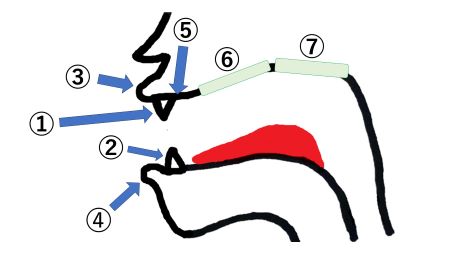 | 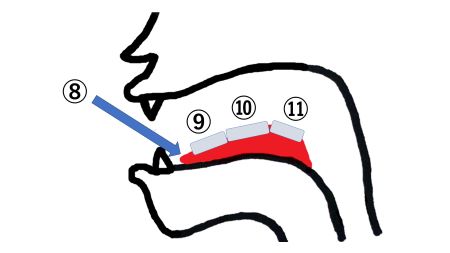 |
| ① upper teeth ② lower teeth ③ upper lip ➃ lower lip ⑤ alveolar ridge ⑥ hard palate ⑦ soft palate | ⑧ tip ⑨ front ⑩ bridge ⑪ back |
Pronunciation of あ
| Vocal Tract Cross-Sectional View | Mouth & Lips |
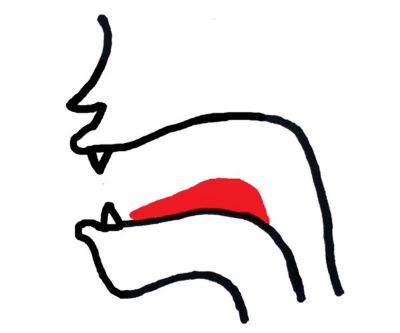 |  |
Tongue: Place your tongue in the lowest position.
Mouth & Lips: Open your mouth wide.
Pronunciation of い
| Vocal Tract Cross-Sectional View | Mouth & Lips |
 |  |
Tip of Tongue: It touches the top and back of our upper teeth.
The bridge of tongue: It is also closer to the hard palate.
Mouth & Lips: Raise the corners of your mouth like when we grit our teeth.
Pronunciation of う
| Vocal Tract Cross-Sectional View | Mouth & Lips |
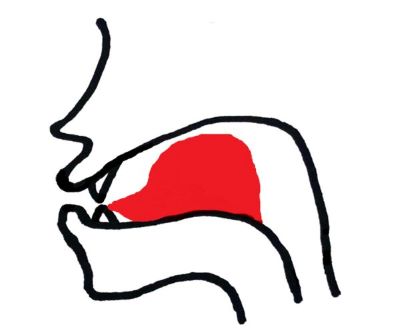 |  |
Tip of Tongue: It touches the top and back of our upper teeth.
Back of Tongue: It is closer to the soft palate. Compared with the tongue position of「い」, there is much space between the tongue and palates.
Mouth and Lips: We pucker our mouth a little.
Pronunciation of う in Kansai Region
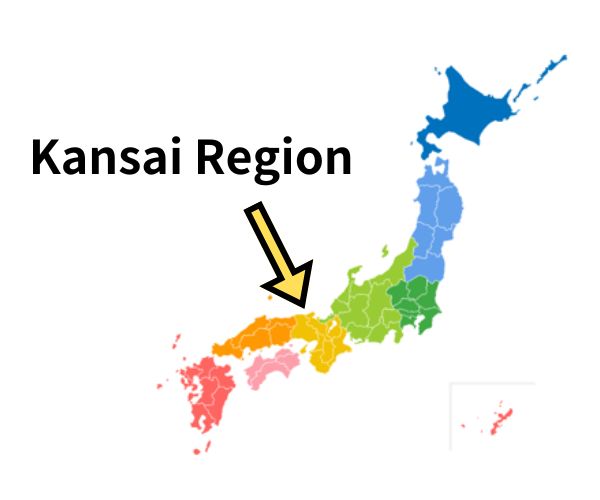
When Japanese people learn how to pronounce the「う」sound, teachers only say “pucker your mouth.” However, it is said that there are two types of 「う」pronunciation depending on where you grew up in Japan. The differences are divided into the Kansai region and the rest of Japan.
Lip shape of「う」and the International Phonetic Alphabet:
| Kansai Area | Rest of Japan |
 u |  ɯ |
In the Kansai region, they pucker up their mouths when they say「う」. In the below diagram, you can see the “u” as seen in the International Phonetic Alphabet. On the other hand, in other areas of Japan, people pucker up their mouths only a little when saying「う」. It is represented as “ɯ” in the International Phonetic Alphabet.
Pronunciation of え
| Vocal Tract Cross-Sectional View | Mouth & Lips |
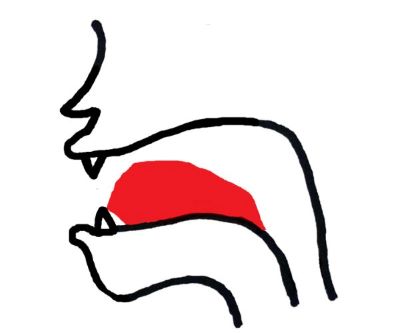 |  |
Tip of Tongue: It touches the top and back of our upper teeth.
Bridge of Tongue: It is closer to the hard palate. However, compared with the tongue position of「い」, there is much space between the tongue and hard palate.
Mouth & Lips: Open your mouth less wider than when you pronounce「あ」.
Pronunciation of お
| Vocal Tract Cross-Sectional View | Mouth & Lips |
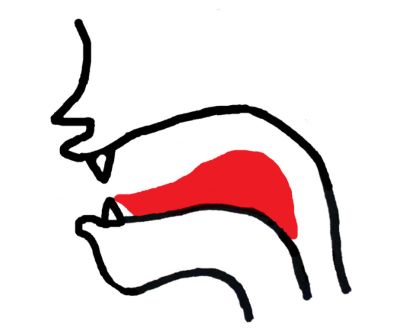 |  |
Front Tongue: It is slightly away from the gums of our lower teeth.
Back of Tongue: It is closer to the soft palate.
Mouth & Lips: Round your lips.
To Pronounce them Correctly
There are many cases in which we cannot understand non-native learners’ Japanese because they have a strong accent in their first language. It is said that it is difficult to listen to and pronounce a second language when our first language does not have the same sound as the second language. To pronounce Japanese correctly, we need skills in how to move our tongue and mouth, how to breathe, learn the pitch accent, rhythm, and so on.
Therefore, we provide lessons and services to improve your Japanese. If you take our “Daily Japanese Mail Support,” we will check and analyze your Japanese. Before you acquire incorrect Japanese, please show us your Japanese.



